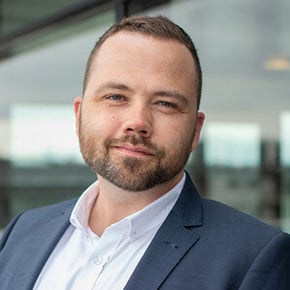Diversity, equity, and inclusion (DE&I) are not just buzzwords; it's a hyper-current topic in the field of Employee Experience. In this article, we will delve into the definitions of these important concepts and explore how they can transform your workplace into a hub of growth, innovation, and well-being.
|
Jump to: |
The Definitions of Diversity, Equity, and Inclusion
Diversity, equity, and inclusion are three intertwined principles that promote a fair and respectful environment in a variety of settings, including workplaces, schools, and communities. It’s about celebrating differences, providing equal opportunities, and fostering a sense of belonging for all individuals, regardless of their background.
The definition of diversity:
Diversity encompasses the wide range of differences among people. These differences can include characteristics such as gender identity, race, age, physical ability, sexual orientation, and more. It's the recognition that everyone brings a unique set of characteristics to the table.
The definition of equity:
Equity means fairness and justice. It recognizes that all individuals do not start from the same place and require different resources to thrive and achieve their goals. Equity should not be confused with equality, which seeks to provide the same for everyone. Equity ensures that everyone has an equitable opportunity to succeed.
The definition of inclusion:
Inclusion is about embracing every human being, regardless of their attributes such as gender, race, age, or sexual orientation. It is about creating an environment where every employee feels accepted, valued, and comfortable being their authentic selves in any setting.
What is Diversity, Equity, and Inclusion in a Workplace?
Diversity, equity, and inclusion, often referred to as DE&I, is the foundation of a thriving and inclusive workplace.
Diversity in an organizational context refers to the presence of differences in various aspects such as gender, sexual orientation, race, age, and more within the workplace.
Equity in an organizational context is the implementation of fair and equitable practices, programs, and policies that provide every individual an equal opportunity to succeed.
Inclusion in an organizational context is about ensuring that all employees feel accepted and comfortable in their workplace, allowing them to be their true selves.
These three components are the building blocks of an inclusive work environment that makes the employees feel welcome and connected to the organization, which in turn increases employee wellbeing and encourages them to engage and speak up.
The Benefits of DE&I
Focusing on diversity, equity, and inclusion within an organizational context can provide you with multiple benefits that touch different areas of your business. Here are some of them:
-
Improved employee well-being, which leads to higher employee satisfaction and a more positive work environment.
-
Increased employee engagement, resulting in higher productivity and commitment.
-
Better employee branding, because a strong sense of belonging among the employees can turn them into brand ambassadors, promoting the company’s reputation.
-
Increased diversity of input and viewpoints provided by the diverse teams, fostering creativity, and bringing nuanced perspectives to the decision-making process.
-
Improved financial performance, as evidenced by studies such as Gartner’s, which found that 75% of companies with diverse and inclusive teams outperform their financial targets.
-
Broader talent pool for recruitment, as diverse organizations attract a wider range of candidates, making it easier to recruit top talent (especially when targeting Gen Z, where diversity is highly valued).
-
Key part of ESG (Environmental, Social and Governance) which is an increasing focus for many organizations as this is requested by both clients, investors, authorities, and employees. Many organizations have been working on environmental issues for a long time but are now ramping up on social issues.
Four Types of Workplace Diversity
Workplace diversity is commonly categorized into four different types, each of which contributes to a complete picture of the workforce:
-
Internal diversity includes characteristics that people are born with, such as gender, race, nationality, and physical ability.
-
External diversity refers to characteristics that define an individual’s identity but were not given at birth, such as religion, socioeconomic status, and life experiences.
-
Organizational diversity pertains to differences found in an organizational context, including job title and function, department, work experience and management level.
-
Worldview diversity encompasses broader characteristics such as a person’s beliefs, culture, political ideologies, moral and ethical values, and philosophical views.
Don’t Wait to act on DE&I
Diverse and inclusive workplaces retain more talent, innovate faster, and perform better. Start your DE&I journey today — the cost of waiting is too high.
How to Get Started with DE&I
There are several approaches you can take to begin your journey toward promoting DE&I in your workplace. Most importantly, you need to understand your starting point and set clear goals for your DE&I-strategy: What do you wish to achieve with your initiatives? Specific goals provide a solid framework for progress.
DE&I is a complex discipline, and you may consider engaging professional help at various stages of the process. Experts can help you identify areas for improvement, collect data through DE&I surveys, analyze data findings, and formulate and implement sustainable and meaningful initiatives.
By embracing diversity, equity, and inclusion in your workplace, you can create a more vibrant, innovative, and supportive environment: paving the way for growth, improved performance, and an enhanced employee experience.
Get in touch with usReady to Strengthen Your Employee Experience?
Our experts are ready to help you and your organization collect the right data and turn it into action. From survey setup to consulting, we're with you every step of the way.
|

